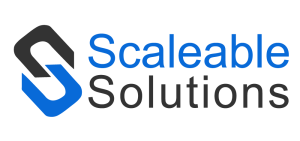The education sector has seen a significant transformation with the integration of automation technologies. By leveraging advanced tools and systems, schools, colleges, and universities can enhance learning outcomes, streamline administrative tasks, and improve overall efficiency.
Solution:
One of the key areas where automation has made a significant impact is personalized learning. Automation enables the creation of personalized learning paths tailored to each student’s needs, abilities, and preferences. By analyzing student data and performance, AI-powered adaptive learning platforms can provide customized content, practice exercises, and assessments. This leads to:
- Improved engagement and motivation
- Faster skill acquisition and knowledge retention
- Reduced achievement gaps and increased equity
- Enhanced student satisfaction and learning outcomes
Automation has also revolutionized the grading and feedback process for educators. Grading assignments and providing timely feedback is a time-consuming task, but automation can help streamline this process. Automated grading systems can automatically grade multiple-choice, fill-in-the-blank, and short-answer questions, providing instant feedback to students on their performance and areas for improvement. This not only frees up time for teachers to focus on higher-level instruction and mentoring but also generates detailed reports on student progress and class performance.
Intelligent tutoring systems (ITS) are another example of how automation is transforming the education industry. These AI-based applications provide personalized instruction and feedback to students, adapting to their learning style and pace. ITS can offer step-by-step guidance and explanations, provide hints and feedback to help students overcome difficulties, track student progress, and identify areas for improvement. These systems can supplement classroom instruction and provide additional support to students, enhancing their learning experience.
Automation has also streamlined various administrative tasks in educational institutions, such as student enrollment and registration, attendance tracking and monitoring, scheduling classes and managing timetables, generating transcripts and academic records, handling financial transactions and payments, and automating communication with students and parents. By automating these tasks, educational institutions can significantly reduce workload for teachers and staff, allowing them to focus on core educational activities.
Benefits:
The benefits of automation in education are numerous. Improved learning outcomes, enhanced efficiency, cost savings, scalability and accessibility, and data-driven decision making are just a few of the advantages that automation brings to the table. As the education industry continues to evolve, the adoption of automation technologies will be crucial for institutions to stay competitive, improve learning outcomes, and prepare students for the challenges of the 21st century.


